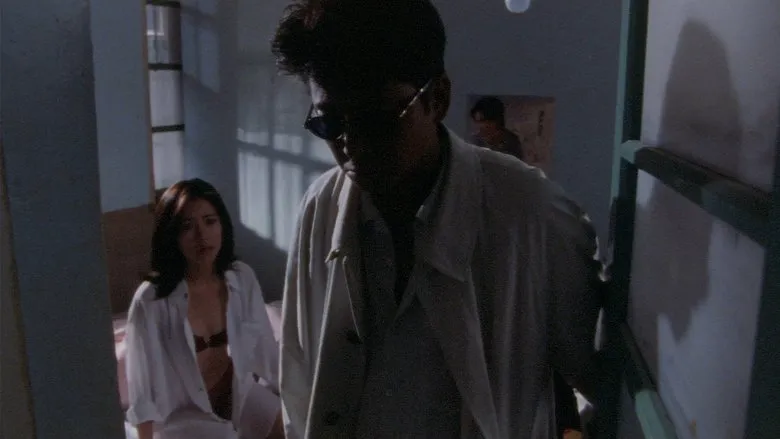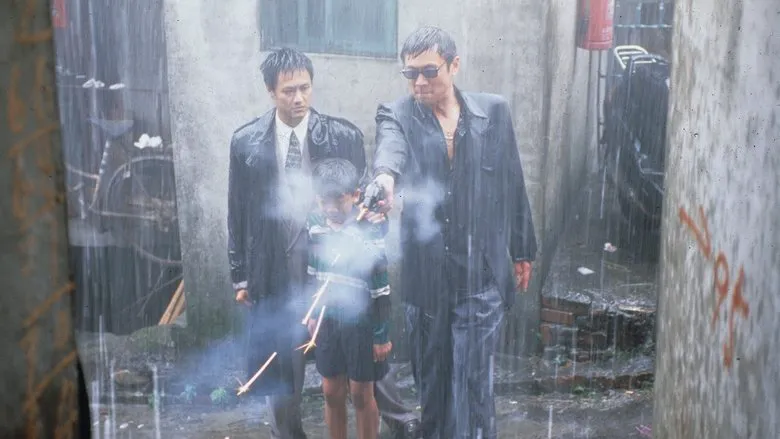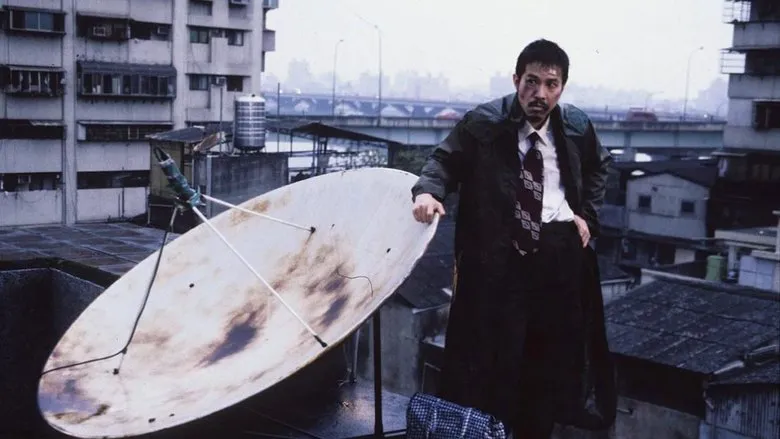Beyond Hong Kong and Korea: Diving into the Rich World of Japanese Yakuza Films
While the global cinematic stage often crowns Hong Kong or South Korean productions as the quintessential gangster sagas, Japan offers a truly distinct and compelling vision of the underworld. Anchored by the fascinating, almost institutionalized presence of the Yakuza within its society, Japanese cinema has forged an unparalleled legacy of crime films that delve deep into loyalty, betrayal, and the complex codes of honor in a world often deemed “dishonorable.” These narratives offer a unique window into a subculture deeply embedded in the nation’s fabric, presenting a complex tapestry of tradition, violence, and paradox.

Here, we journey through a curated selection of some of the most impactful and essential Japanese Yakuza movies, showcasing the breadth and depth of a genre that continues to captivate and provoke.
10 Essential Japanese Yakuza Films
1. The Family (Yakuza and the Family) (2020)
This modern epic, spanning two transformative decades, offers a sweeping chronicle of the Yakuza’s evolution, charting their profound shifts from dominance to decline across changing eras. Rather than merely showcasing violent encounters, it masterfully weaves intense, visceral action sequences with powerful, nuanced emotional depths, culminating in a conclusion that is both deeply moving and melancholic – a final, poignant elegy to a fading way of life for the criminal organizations that once held such sway.
2. Battles Without Honor and Humanity (1973)
Kinji Fukasaku’s seminal 1973 masterpiece remains an untouchable pillar of Yakuza cinema. Plunging viewers into the chaotic aftermath of post-war Japan, it relentlessly follows demobilized soldier Shozo Hirono as he navigates the brutal and treacherous labyrinth of the Yakuza underworld. The film is a raw, unflinching dissection of the internal power struggles and ruthless conflicts that plagued the gangs, revealing the true meaning of “dishonor” within their ranks. Its groundbreaking realism and cynical portrayal of authority figures radically reshaped the landscape of subsequent Yakuza films, influencing countless directors and setting a new standard for the genre.

3. The Blood of Wolves (2018)
Set against the vibrant, yet volatile backdrop of Hiroshima in 1988, The Blood of Wolves is a gritty, unsparing, and often explicit foray into the escalating tensions within the Yakuza underworld. Told primarily through the eyes of two dedicated, albeit morally ambiguous, detectives, the narrative follows their desperate efforts to unravel the disappearance of a finance company employee and avert a full-scale gang war. Even with a narrative that might feel familiar in its core premise, the film consistently delivers shocking and visually arresting scenes through intense performances and a palpable sense of dread, cementing its place as a visceral modern classic.
4. Outrage (2010)
The indelible Takeshi Kitano, a true titan of Japanese cinema, demonstrates his multi-faceted genius by directing, writing, and starring in this taut, gripping descent into the treacherous power struggles and pervasive betrayals rife within Tokyo’s criminal ecosystem. The film meticulously tracks the brutal ascent of a low-ranking Yakuza boss as he claws his way up the hierarchy through sheer violence and cunning. Outrage is the explosive first installment of Kitano’s iconic trilogy (followed by Outrage Beyond and Outrage Coda), which collectively serves as a masterclass in examining the cyclical nature of revenge, infighting, and the twisted sense of loyalty that defines the Yakuza world, all while maintaining an impeccably high standard of intense, unyielding quality.

5. Why Don’t You Play in Hell? (2013)
From the wildly inventive mind of Sion Sono comes this audacious and truly original cinematic concoction. The plot unfolds as a quirky Yakuza boss, desperate to fulfill his daughter’s acting ambitions, enlists an eccentric aspiring independent filmmaker. Their canvas? A real, escalating Yakuza turf war. What emerges is an exhilarating, often absurd, and darkly comedic blend of brutal gang violence and meta-cinema, creating a film that is unlike any other—a vibrant, blood-soaked love letter to filmmaking itself, celebrating the chaos and creativity of the movie-making process amid genuine danger.
6. Sonatine (1993)
An essential early work from Takeshi Kitano, Sonatine diverges significantly from conventional Yakuza narratives, showcasing Kitano’s burgeoning distinctive minimalist style. The film follows a disillusioned Yakuza boss, Murakawa, who, facing forced retirement and escalating gang conflicts, finds himself adrift on a quiet Okinawa beach. There, he and his men engage in a series of increasingly bizarre and lethally playful activities, providing moments of unexpected tranquility contrasted starkly with sudden, brutal violence. Ultimately, Murakawa’s journey is one steeped in existential weariness and despair, culminating in a poignant choice to end his own life, a stark subversion of the typical heroic gangster trope. It’s a deeply contemplative and human portrayal of a Yakuza leader, showcasing the internal decay more than external bravado.
7. Shinjuku Triad Society (1995)
Takashi Miike, the undisputed master of cinematic transgression, kicks off his renowned “Black Society Trilogy” with Shinjuku Triad Society. This harrowing film, continued in Rainy Dog and Ley Lines, plunges viewers into the raw, unforgiving underbelly of marginalized individuals struggling to survive within the murky and brutal Yakuza world. Miike’s unflinching gaze exposes the inherent ruthlessness of this ecosystem, brilliantly dissecting the complex and often morally ambiguous facets of human nature when pushed to its absolute limits. It’s a challenging watch, but a profoundly impactful one, delving into themes of identity, desperation, and violence with signature Miike intensity.
8. Ichi the Killer (2001)
Another iconic and infamously extreme work from the visionary Takashi Miike, Ichi the Killer is not for the faint of heart. The film descends into sheer pandemonium following the mysterious disappearance of the Anjo gang’s boss, igniting a frantic search for the enigmatic and notoriously brutal killer known as Ichi. Miike’s signature aesthetic of hyper-stylized violence and extreme gore is on full, unapologetic display here, pushing the boundaries of cinematic depiction to such an extent that infamous reports surfaced of dedicated “barf bags” being distributed at some screenings – a testament to its visceral and challenging nature. It’s a shocking, unforgettable delve into the most depraved corners of the criminal mind.

9. Strayer’s Chronicle (2015)
This electrifying Yakuza action film masterfully incorporates classic undercover elements into its thrilling narrative. It chronicles the perilous journey of ex-detective Sogo Kaneshiro as he infiltrates the inner sanctum of the Yakuza, a mission that unravels a complicated web of deceit and unexpected truths hidden beneath the surface of the criminal world. The film distinguishes itself with its exceptional, hard-hitting fight sequences, delivering a relentless barrage of high-difficulty action choreography that provides a truly satisfying and impactful sense of physical realism. It’s a gritty spectacle of street-level combat, blending a compelling storyline with exhilarating martial arts prowess.
10. Brother (2000)
Cementing his personal brand of Yakuza cinema defined by stark brutality and visceral violence, Takeshi Kitano’s Brother takes the genre across continents. The film follows the stoic Yakuza lieutenant Yamamoto who, after a devastating gang war forces him to flee Japan, seeks refuge in the sprawling urban landscape of Los Angeles. There, he inevitably finds himself embroiled in another brutal conflict, embarking on a remarkable journey to establish his own formidable power empire. What sets Brother apart is its unique cultural lens, as Yamamoto leads an unlikely alliance of American gangsters, providing both inspiring dynamics and sharp, satirical commentary on cultural clashes and the universal nature of power struggles. Ultimately, however, it’s a grim meditation on the inescapable pull of fate and the cyclical nature of violence, proving that some destinies cannot be outrun, no matter the distance.